“Prepare for a future in which the only way of making a living is to ‘lend your lung’ to filter heavily polluted air. Clean Air International Inc. is looking for suppliers for its first Organic Clean Air (TM) retail store.”
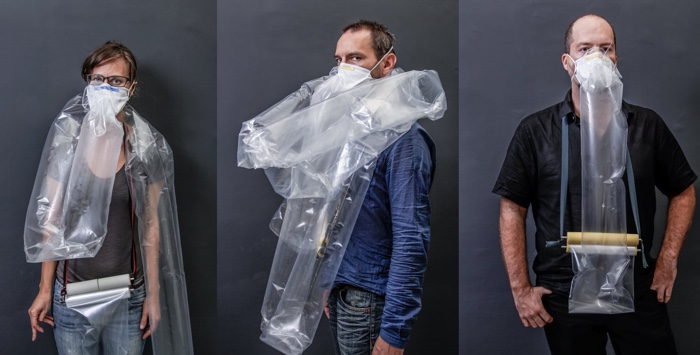
Air Slaves. Image courtesy of Let it Be! art agency
Air Project. Work-in-progress demo on 25 September 2012, Labor, Budapest
Visitors of the Air Slaves exhibition which opens next Monday in Berlin will be invited to cover their mouth with a mask and walk around the space freely.
Throughout their stay in the gallery, their expiration will slowly inflate and fill in the plastic container attached to the mask. As each visitor exits the space, their bag will be sealed, carefully labelled and stored inside the Organic Clean Air depository along with the exhalations of previous visitors.
Hanging side by side, these “second-lung air” containers will build up a “lung-print” of human presence in the space.
Air Slaves is a speculative art installation that uses air as a metaphor for access to natural resources and reflects on a future in which good quality air has become so rare and valuable, it has become a commodity, not a basic right and necessity. A suggestion that appears to be a reality in some of the most polluted cities in the world.
Family sell British fresh air to wealthy Chinese elite for £80 a jar
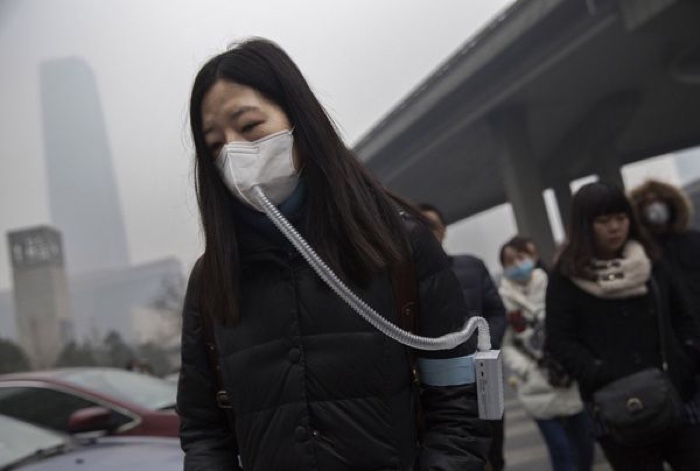
A Chinese woman wears a mask and filter as she walks to work during heavy pollution on December 9, 2015 in Beijing, China. Photo: Kevin Frayer/Getty Images, via Mashable
This project is thus not about the quality of air as such but about access to it. It points to a future in which natural resources are being commodified and privatized. Just like what happens in certain parts of the world where the answer to water scarcity or poor quality is market-driven. You bottle the water, rather than tackle the problem to its roots.
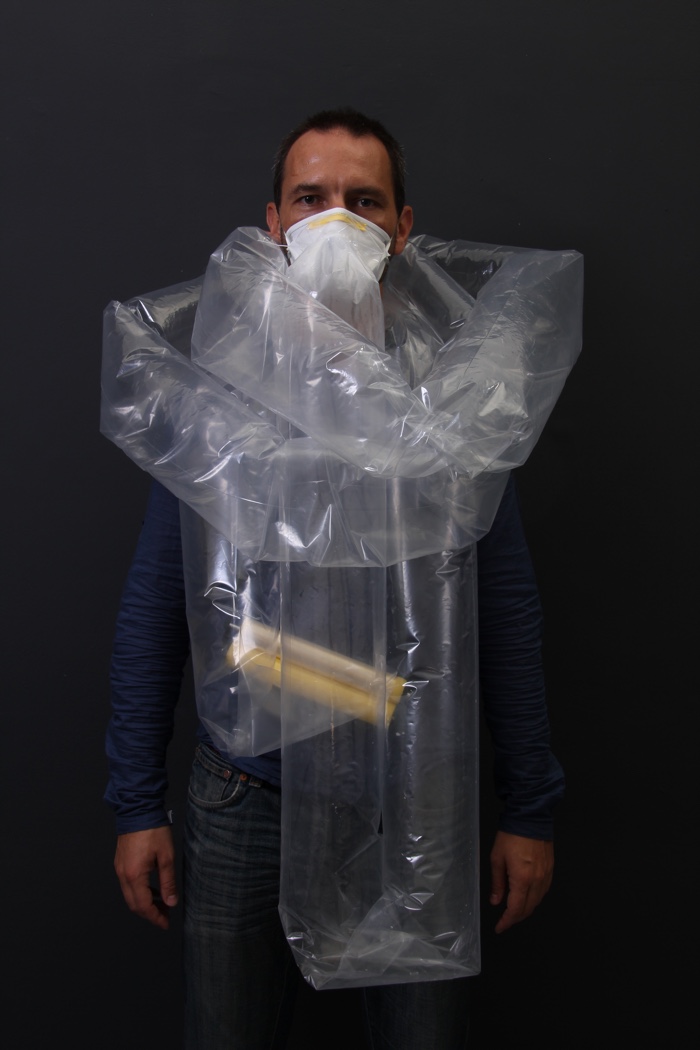
Air Slaves. Image courtesy of Let it Be! art agency
The members of Let it Be!, the art agency behind the work, found a moment to answer my questions while preparing for the opening of the Air Slaves show in Berlin:
Hi Attila, Melinda, Andrea and Zoltán! Air Project ‘reflects on a future in which fresh air has become extremely rare and valuable.’ I was wondering if you could be more specific and tell us about the kind of concrete future the project is referring to. Do you see signs of this rarefaction or maybe even privatisation of air in society?
Attila Bujdosó: For me, this project is not really about air. We use air as a metaphor to resources, be they natural and social, in general. Also, this project is as much about our present as it is about our future. But talking about the future seems much easier to me because it allows speculation and playfulness without the need to prove our every step scientifically.
Melinda Sipos: Sometimes you feel that the human effects on the natural environment are so extreme that you can imagine this as one final phase before it collapses. We also often spoke about drinking water which is already a product and is an expensive commodity in some areas. And even though light is not crucial to life to live or work in a bright space, especially in a megalopolis, is a sign of wealth.
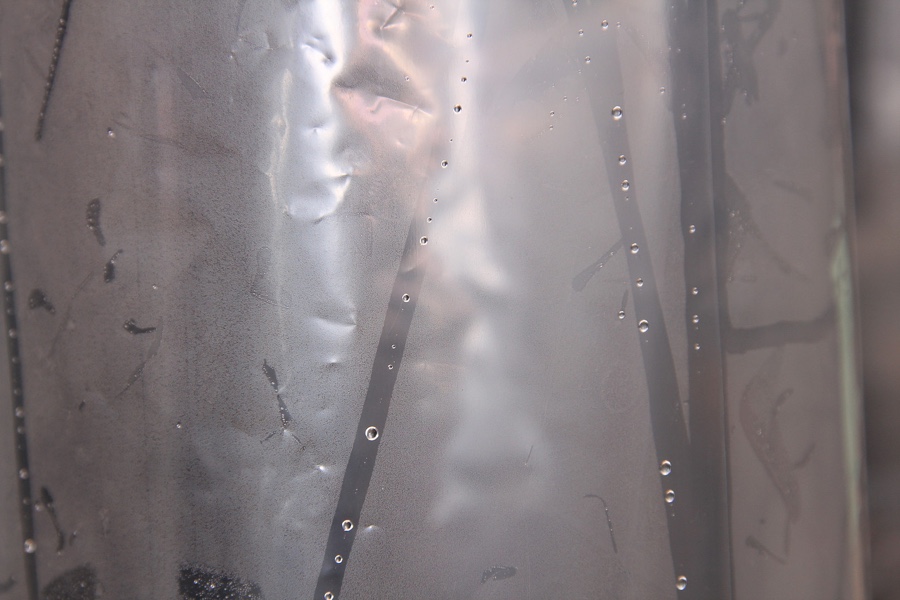
Air Project. Work-in-progress demo on 25 September 2012, Labor, Budapest
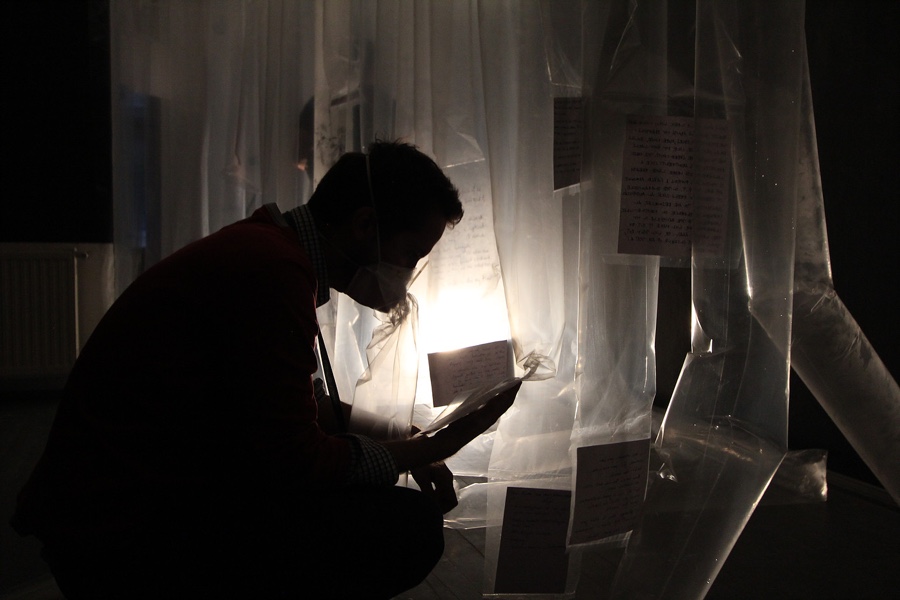
Air Project. Work-in-progress demo on 25 September 2012, Labor, Budapest
You had a first experiment with the project in Budapest back in 2012. How did visitors react to the idea behind the work? Were there surprising ways in which they reacted to or engaged with the work?
Attila: One thing which we anticipated beforehand and turned out to work really well is that participants indeed developed a personal relation to the air they exhaled and we encapsulated. We also took portraits of them, proudly posing with their plastic bags.
This air, however, is not any different biologically from the air they exhale at any time of the day. What the installation showed so well that collecting it and putting it into a plastic bag made them feel a sense of ownership over the air they exhaled. Ownership, thus, is socially constructed, and surprisingly easily constructed.
Melinda: Moreover, we also got into the situation or illusion that people left something valuable behind, a part of them. Before the experiment we concentrated more on the visualisation side of it and when we were left there with all the bags we felt a little embarrassed I think.
And what about their personal experience of the whole process? To me, the plastic mask looks claustrophobic and borderline suicidal but maybe i’m a bit dramatic?
Melinda: No, it does for sure. The whole instrument looks scary and weird. But surprisingly, people’s experience was rather intimate and relaxing. Many of them told us they felt encouraged to slow down by wearing the mask and be conscious about their breath. Breathing is something we don’t pay attention to it usually but the fact that the air was collected plus seeing the plastic bag growing gave it so much attention.
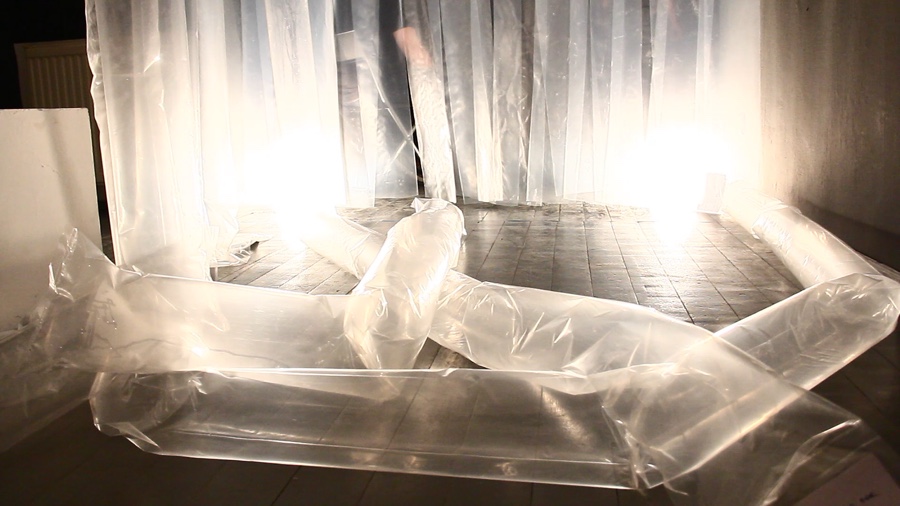
Air Project. Work-in-progress demo on 25 September 2012, Labor, Budapest
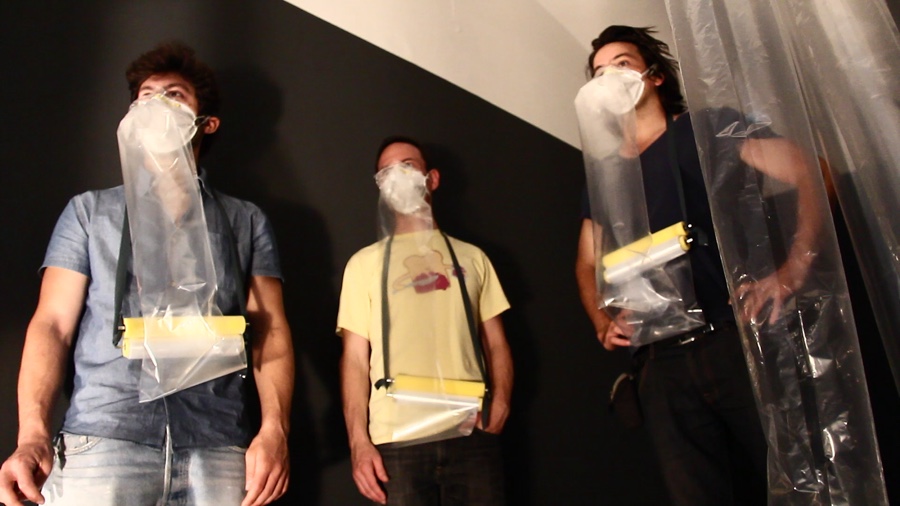
Air Project. Work-in-progress demo on 25 September 2012, Labor, Budapest
Could you tell us about the ‘data embodiment’ dimension of the work? We don’t normally associate data with exhaled air so why was it important to you to put a physiological function into a data perspective?
Zoltán Csík-Kovács: That was the first idea where the project originated from. It was on a data embodiment workshop organized by Baltan Laboratories and Kitchen Budapest in 2011. We got inspired by the idea of somehow making the volume and weight of exhaled air from all the people in the room visible and tangible. So we started to think about collecting the exhaled air into plastic bags and the possible ways this could be managed in a framework of a participatory exhibition. A lot of aspects, layers and unique expressions come into view while drafting afterwards like “air as a metaphor of sharing”, or “second-lung air”, or “lungprint”, and of course the question “where is the last breath of Elvis”.
Melinda: To me the fascinating thing about data visualisation in general is that you start seeing and understanding things which were invisible beforehand. Doing that in three dimension makes it even more compelling (this is why we initiated the whole Beyond Data project Zoltan mentioned). And with the air (exhale) it just seemed so impossible and so much on the border of something that can or cannot be shown that we really felt the urge to work with.
What are the little texts at the bottom of the plastic tubes we see in the video?
Zoltán: We asked the participants to write down their own thoughts on a paper that would go along with their packed exhaled air. We sealed the handwritings into the plastic bags so other visitors could read them. What I like the most is the intimacy it creates. While reading their thoughts you can’t help personalizing these empty-like plastic bags and feeling a kind of vacuum that the person left for you. In this way the installation space also gave room for a constant and silent conversation where thoughts followed thoughts within a loosely articulated theme.
Attila: But for the upcoming show in Berlin this will change.
So the project in Berlin will be different from what you presented in Budapest? The text on the facebook page is a bit different, it sounds a bit more radical “Prepare for a future in which the only way of making a living is to ‘lend your lung’ to filter heavily polluted air. Clean Air International Inc. (CAI) is looking for suppliers for its first Organic Clean Air (TM) retail store.”
Zoltán: Yes, it will be different. We will experiment with putting the visitors into and reflecting to well recognized situations in today’s consumer world, like being in a retail shop or being a donor of some medical institute. So consuming goods and being the goods. This time we play a role of a huge company, Clean Air International, that is the only choice for most of the people in a dystopian world to make a living. The whole situation is imaginary but it more accurately reflects upon critical debates of today or approaching in the near future like ecological crisis, artificial intelligence taking jobs from people, wealth inequality, unconditional basic income, etc.
Attila: Yes, the installation will be more radical in Berlin. The world has become more radical, especially since last year, so we reflect on that. It addresses issues on how we will deal with mass-unemployment, ecological change or economic and political shifts.
I’m also quite curious about Let it Be! art agency. What is it exactly? Are you a group of artists? a kind of go between agency that facilitates relationships between artists and tech companies or other private or public entities?
Andrea Kovács: Budapest based Let it Be! art agency is developing new interdisciplinary forms of co-operation between different areas of art and creative industries by exploring possibilities in innovative collaborations. The agency is engaged in managing and initiating cross media and urban city projects which focus on new synergies of art and technology. Our projects are inviting for explorative city journeys, virtual adventures in the augmented reality and offer unique interactive installations and performances.
Air Slaves Berlin is a work-in-progress presentation. It is included in the official program of transmediale and CTM Vorspiel 2017 as part of Collegium Hungaricum Berlin’s Human Signals event series curated by Andrea Kovács, the founder of Let it Be! The thematic programs are focusing on the interactions between human body and different kind of physical and digital surroundings. Human Signals provides interactive installations, biofeedback performances and creative coding workshops such as a pop up exhibition. The invited Hungarian artists are working on methods of data visualisation in different creative fields by using sounds, movements, breathes, heartbeats, memories, touches and feelings. They experiment with possibilities of making visible biological processes and activating our perception and instinct in unique ways.
Thanks Attila, Melinda, Andrea and Zoltán!
The Air Slaves show is open on 6 to 8 Februrary at Collegium Hungaricum in Berlin.
You can register to participate.
Related story: Who owns the air?
